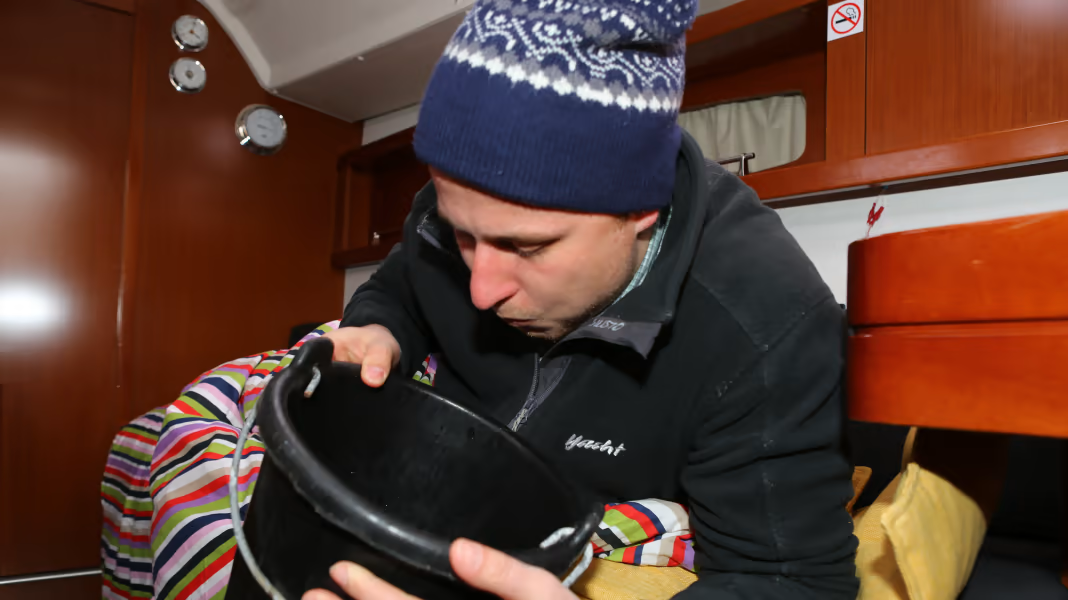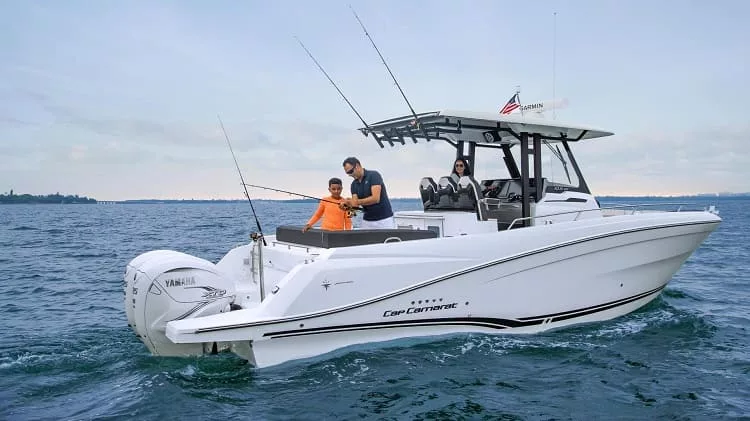How to Not Get Seasick on a Fishing Boat: Top Tips to Prevent Nausea and Enjoy Your Trip
There’s nothing like the thrill of heading out on a fishing boat, feeling the breeze and the promise of a great catch. But if you’re like me, the excitement can fade fast when seasickness hits. That queasy feeling can turn a dream trip into a long, miserable ride.
I’ve learned that you don’t have to let motion sickness ruin your day on the water. With a few simple tricks and a little preparation, it’s totally possible to keep your stomach settled and your mind focused on the fish. Let me share what works so you can enjoy every moment out at sea.
Understanding Seasickness on a Fishing Boat

Understanding-Seasickness-on-a-Fishing-Boat
Seasickness on a fishing boat starts when my inner ear senses motion that my eyes don’t see. The mismatch between my senses triggers signals in my brain that result in nausea, dizziness, and cold sweats. Symptoms often intensify in choppy waters or when the fishing boat stops and rocks in place.
I notice seasickness more when I’m below deck or focused on small tasks, like baiting hooks, because I lose sight of the horizon. Key contributors include rough seas, fuel fumes, and dehydration. I find that symptoms like headache and fatigue usually appear with persistent motion on the water.
Stress and excitement before fishing can heighten my sensitivity to movement, making prevention important. Recognizing these causes and early warning signs helps me respond quickly and avoid worsening symptoms.
Preparing Before Your Trip
Getting ready for a fishing boat trip means taking simple steps to reduce the risk of seasickness. I focus on preparation at home, pack smart, and choose the right remedies based on my sensitivity to motion.
Choosing the Right Medications
Bringing the right medications lowers my chances of feeling nauseous on board. I take over-the-counter antihistamines like Dramamine or Meclizine (Bonine) before my trip and follow the instructions exactly, watching for drowsiness. Scopolamine patches behind my ear go on about 8 hours before leaving and last up to three days, which I use when I know I’ll be fishing all weekend. I only take seasick tablets at night and in the morning if my doctor recommends it.
Selecting the Best Foods and Drinks
Selecting mild foods and hydrating drinks helps keep my stomach calm. I eat a light, bland breakfast—bananas or toast—and skip spicy or greasy food before fishing. During my trip, I nibble salty crackers and sip flat ginger ale or water. I avoid acidic juices, alcohol, and heavy meals, which worsen nausea. I chew crystallized ginger or brew ginger tea since that calms my stomach whenever I feel uneasy.
Essential Gear to Bring
Bringing essential gear keeps me more comfortable on deck. I pack seasickness wristbands for acupressure relief, even though their effects differ for everyone. Fresh air becomes my priority, so I stay outside and lie down with my eyes closed if symptoms appear. I wear a hat and use sunscreen to shield myself from the sun, which helps prevent overheating and dehydration on long days at sea.
Onboard Strategies to Prevent Seasickness

Onboard-Strategies-to-Prevent-Seasickness
I use specific strategies while onboard to reduce the risk of getting seasick on fishing boats. Attention to position, breathing, and hydration supports my comfort and helps prevent symptoms.
Finding the Best Spot on the Boat
I sit near the middle of the boat, close to the waterline, where rocking feels minimal. I always face forward so my body and vision align with the boat’s motion. If seas get rough, I stay on deck in the open air since fresh air eases discomfort, and being outside helps my senses adjust. When symptoms start, I lie down on deck with my eyes closed to calm any dizziness.
Breathing and Focusing Techniques
I control my breathing with slow, deep inhales through my nose and slow exhales through my mouth. This deep diaphragmatic breathing pattern relieves early nausea. I focus on the distant horizon or a stable point on shore rather than looking at the deck or my hands, to keep my brain from getting confused by conflicting signals. Listening to music or briefly taking the wheel distracts me, reducing awareness of motion. I avoid reading or using screens since looking at close objects worsens my symptoms.
Staying Hydrated and Nourished
I drink plenty of water throughout my trip because dehydration increases nausea. To keep my stomach settled, I eat light snacks such as crackers or ginger candies, avoiding anything heavy, greasy, or acidic. I skip alcohol and shield myself from direct sun to stop overheating and keep from drying out. I also rely on ginger, known for anti-nausea properties, when conditions feel challenging.
What to Do If You Start Feeling Seasick
If I start feeling seasick on a fishing boat, I act quickly to prevent symptoms from getting worse. Early intervention can limit discomfort and help my body adapt to the boat’s motion.
Immediate Actions to Relieve Symptoms
Focusing on the horizon keeps my senses aligned and reduces dizziness. I take slow, deep breaths through my diaphragm to calm nausea, making sure I’m breathing steadily. Moving to an open, well-ventilated area on deck gives me fresh air and limits exposure to strong odors like diesel or fish, which can trigger nausea. Lying down on my back, with my eyes closed, helps my inner ear recalibrate to the boat’s movement if I feel unsteady. I sip water regularly to stay hydrated and avoid caffeine or alcohol, since both can make symptoms worse. I avoid heavy or greasy foods, choosing plain crackers if I need to keep my stomach settled.
When to Seek Help
I look for signs that seasickness is more than mild nausea, such as severe vomiting, persistent dizziness, or signs of dehydration like dark urine or the inability to keep fluids down. If symptoms don’t improve within 24 hours or if I can’t stay hydrated, I alert the captain or crew. Medical attention is essential if I experience confusion, fainting, or ongoing vomiting, as these may signal complications. Swift intervention keeps minor seasickness from turning into a serious health issue during my fishing trip.
Additional Tips for a Smoother Experience

Additional-Tips-for-a-Smoother-Experience
Scheduling fishing trips for calmer seas helps reduce boat motion and the risk of seasickness; rougher waters increase symptoms. Staying outside on deck instead of below reduces my exposure to engine fumes and strong odors, which often worsen nausea. Choosing light clothing and applying sunscreen keeps me cool and prevents overheating, since heat stress contributes to discomfort. Using distractions like music or engaging conversation helps redirect my focus when I start to feel uneasy. Grabbing the helm, if possible, lets me control the boat’s movement and improves my sense of balance during longer outings. I always stick to water, ginger ale, or peppermint tea for hydration, since acidic or alcoholic drinks can aggravate symptoms.
Carrying over-the-counter remedies such as Dramamine or Bonine ensures quick response if symptoms develop, but I check for drowsiness and dosage instructions before use. Taking deep, slow breaths relieves mild nausea, especially when combined with looking at the horizon to sync my inner ear and vision. If nausea increases, I lie down in a shaded open-air spot, close my eyes, and focus on breathing to minimize sensory conflict. I never eat heavy, greasy foods before or during a trip, as these have triggered nausea on past excursions. Keeping my stomach slightly full with crackers or light snacks helps stabilize my experience out on the fishing boat.
Conclusion
Fishing trips should be memorable for the catch and the adventure—not for feeling queasy. With the right preparation and a few smart habits, I’ve found that it’s totally possible to stay comfortable and focused on the fun.
Everyone’s different when it comes to motion sensitivity, so don’t hesitate to try a mix of strategies to see what works best for you. A little planning goes a long way toward making every fishing trip something you’ll want to repeat.
Frequently Asked Questions
What causes seasickness while fishing?
Seasickness happens when your inner ear senses motion that your eyes don’t see, causing confusion in your brain. This leads to symptoms like nausea, dizziness, and sweating. Rough waters, strong boat smells, dehydration, and stressful anticipation can also trigger or worsen seasickness during fishing trips.
How can I prevent seasickness before going fishing?
Prepare ahead by packing seasickness medications (like antihistamines or patches), wearing wristbands, and choosing light meals and drinks. Snack on salty crackers, sip ginger tea, and stay hydrated. Opt for sun protection and make sure you’re well-rested for a better experience.
What should I eat and drink to minimize seasickness?
Eat small, light meals—such as bananas, crackers, or dry toast—before and during your trip. Drink plenty of water, ginger tea, or peppermint tea to stay hydrated. Avoid heavy, greasy, or spicy foods, as well as caffeine and alcohol, which can worsen symptoms.
Where should I sit on the boat to avoid seasickness?
Sit in the middle of the boat, as it has the least movement. Face forward and stay on deck in the fresh air. Focus on the horizon to align your senses, and avoid staying below deck or in confined spaces where motion feels stronger.
What should I do if I start to feel seasick?
Act quickly by moving to the deck, focusing on the distant horizon, and taking slow, deep breaths. Lie down if possible and sip water or ginger ale. Avoid reading or small tasks, and don’t go below deck unless necessary. If symptoms worsen, seek help immediately.
Are there natural remedies for seasickness?
Yes, natural remedies like ginger—either as tea, candies, or capsules—are known to reduce nausea. Peppermint tea and acupressure wristbands may also help some people. These can be used alongside other preventative strategies for added relief.
What over-the-counter medications help with seasickness?
Popular choices include antihistamines like Dramamine (dimenhydrinate) or Bonine (meclizine). Scopolamine patches, worn behind the ear, are another effective option. Always follow dosage instructions and consult your doctor if you have health concerns before use.
How does fresh air help prevent seasickness?
Fresh air helps clear out engine fumes and keeps you cool, both of which can reduce feelings of nausea and dizziness. Staying outside and focusing on the horizon allows your brain to sync up with the boat’s movement, easing most seasickness symptoms.
What should I avoid doing to reduce the risk of seasickness?
Avoid reading, looking at small objects, or staying below deck for too long. Steer clear of strong odors like fuel and greasy or spicy foods. Don’t drink alcohol or caffeinated beverages, and avoid becoming dehydrated or overly tired before your trip.
When should I seek medical help for seasickness?
Seek medical attention if you experience severe or persistent nausea, excessive vomiting, signs of dehydration (such as dizziness and dark urine), or are unable to keep fluids down. Prompt intervention can help you avoid more serious complications during your fishing trip.
